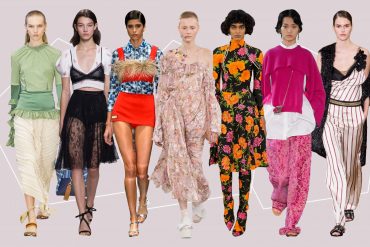Fashion Clothing: The Art of Expression
Fashion has been an integral part of human culture for centuries. From the traditional attire of indigenous tribes to the avant-garde designs of haute couture, clothing has always been a means of self-expression and cultural identity. Today, the fashion industry is a global behemoth, with countless brands, designers, and influencers shaping the way we dress and present ourselves to the world. But beyond the glitz and glamour of the runway, fashion clothing remains a deeply personal and meaningful form of artistic expression.
The Power of Fashion
Fashion is more than just clothes – it’s a language. Through the clothes we wear, we communicate our personality, values, and aspirations to the world. This is especially true for fashion clothing, which is designed to evoke emotion and make a statement. Whether it’s a bold pattern, a daring silhouette, or a unique combination of textures, fashion clothing has the power to inspire, challenge, and captivate its audience.
Fashion is also a reflection of our culture and social norms. Trends and styles change over time, reflecting the values and attitudes of different eras. For example, the flapper dresses of the 1920s represented a rebellion against traditional gender roles, while the power suits of the 1980s symbolized the rise of women in the workforce. Fashion clothing has the ability to reflect and shape the world around us, making it a powerful tool for social change and self-expression.
The Art of Fashion
At its core, fashion is an art form. Like painters, sculptors, and musicians, fashion designers use their creativity and vision to create something beautiful and meaningful. Fashion clothing is more than just a utilitarian item – it’s a canvas for self-expression, a means of telling a story or conveying a message. Whether it’s a couture gown or a streetwear hoodie, fashion clothing is a work of art that reflects the designer’s vision and artistic skill.
One of the most exciting aspects of fashion clothing is its ability to push boundaries and challenge conventions. Through their designs, fashion designers can explore new forms, textures, and colors, breaking free from the constraints of tradition and creating something truly unique. The avant-garde designs of Alexander McQueen, for example, challenged the very notion of what fashion could be, incorporating elements of sculpture, performance art, and even technology into his pieces.
The Business of Fashion
While fashion clothing is undeniably an art form, it’s also a multi-billion dollar industry. From haute couture to fast fashion, there are countless brands and designers vying for consumers’ attention and dollars. As a result, the fashion industry can be fiercely competitive and sometimes cutthroat, with trends and styles changing at breakneck speed.
Despite this, there is still room for creativity and innovation in the business of fashion. Many designers and brands are prioritizing sustainability, ethical production, and inclusivity in their designs, recognizing the power of fashion clothing to create positive change in the world. By using their platform to promote social and environmental causes, these designers are proving that fashion can be both profitable and socially responsible.
The Personal Side of Fashion Clothing
Beyond the runway and the business of fashion, fashion clothing is deeply personal for many people. From choosing an outfit for a special occasion to finding the perfect pair of jeans, our clothes are a reflection of who we are and how we see ourselves. For some, fashion clothing is a form of self-care, a way to boost confidence and feel good about themselves. For others, it’s a means of self-expression and identity, a way to signal to the world who they are and what they stand for.
In recent years, there has been a growing movement towards body positivity and self-love in the fashion industry.
In conclusion, fashion clothing is much more than just a utilitarian item we wear to cover our bodies – it is a powerful form of self-expression, art, and culture. From the avant-garde designs of haute couture to the streetwear styles of urban fashion, fashion clothing has the ability to captivate, inspire, and challenge its audience. As an art form, fashion clothing has the power to push boundaries and create positive change in the world. And on a personal level, it allows us to express our individuality and identity, and feel good about ourselves. Whether you’re a designer, a consumer, or simply someone who appreciates the art of fashion, there is no denying the impact and importance of fashion clothing in our lives.












